Timeline of 20th-Century Cat Breeds: A Quick Look
The 20th century saw a boom in cat breed development. From the cuddly British Shorthair gaining recognition to the unique Scottish Fold and the elegant Siamese solidifying its place, this era shaped many beloved breeds. This timeline highlights key milestones in feline history, bringing you closer to the cats we adore today.
Have you ever wondered when your favorite cat breed came to be? The 20th century was a period of significant development in the world of cat breeds. Many of the cats we know and love today were either established or gained popularity during this time. It can be confusing to keep track of all the different breeds and their origins.
In this article, we’ll explore a timeline of 20th-century cat breeds, offering you a clear and simple guide to understand their history. We’ll cover the emergence of various breeds, their defining characteristics, and how they became the popular pets we cherish. Get ready to discover the fascinating stories behind these feline friends!
Frequently Asked Questions About 20th-Century Cat Breeds
Here are some common questions about the development of cat breeds in the 20th century:
When did the British Shorthair become popular?
The British Shorthair gained popularity in the late 19th century but was officially recognized and standardized in the early 20th century. It experienced a resurgence in popularity in the latter half of the century.
What is a notable characteristic of the Scottish Fold?
The Scottish Fold is known for its unique folded ears, caused by a natural genetic mutation. This gives them a distinctive, endearing appearance.
When was the Siamese cat breed recognized?
The Siamese cat has ancient origins, but it was in the 20th century that the breed became standardized and gained widespread popularity, particularly in the mid-20th century.
What makes the Ragdoll cat unique?
Ragdolls are known for their docile and gentle temperament. They often go limp when picked up, hence the name “Ragdoll.” They were developed in the 1960s.
Are there any hypoallergenic cat breeds that emerged in the 20th century?
Yes, the Siberian cat, which gained recognition towards the end of the 20th century, is known for producing less of the Fel d 1 protein, making it less likely to cause allergic reactions in some people.
How did the Exotic Shorthair come about?
The Exotic Shorthair was created by crossing Persian cats with American Shorthairs. Breeders aimed to create a Persian-like cat with a shorter, easier-to-manage coat. The breed was officially recognized in the late 1960s.
Why is understanding breed history important?
Understanding the history of cat breeds helps us appreciate their unique traits and health predispositions. This knowledge can inform responsible breeding practices and help owners provide the best possible care for their feline companions.
A Century of Cats: Exploring the Timeline of 20th-Century Cat Breeds
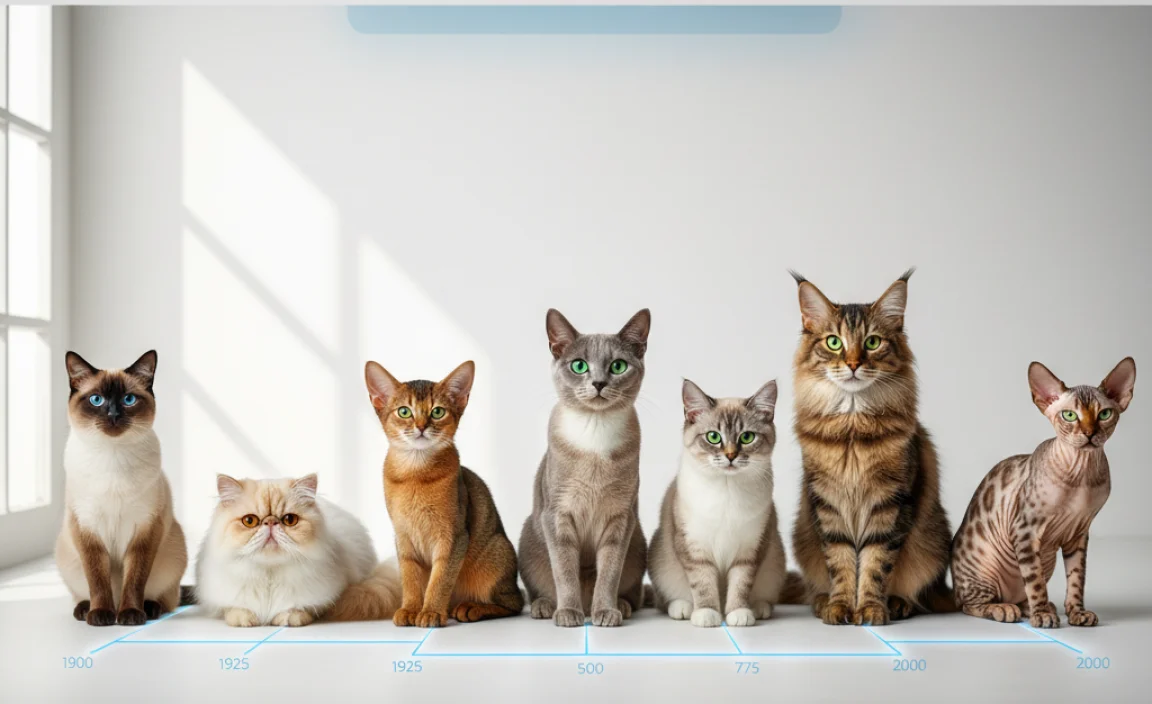
The 20th century was a dynamic period for cat breeds, marked by the emergence of new favorites and the refinement of existing ones. As a cat lover, it’s fascinating to see how these breeds evolved and captured our hearts. Let’s dive into a detailed timeline to explore the origins and development of these feline companions.
Early 1900s: Laying the Foundation
The early years of the 20th century were crucial for establishing many breeds that we still cherish today. These years set the stage for the feline diversity we see now.
- British Shorthair: Officially recognized and standardized. These cats were originally bred to be working cats, keeping barns and homes free of rodents. According to the RSPCA, British Shorthairs are known for their calm and affectionate nature, making them excellent family pets.
- Siamese: Gained popularity beyond their native Thailand. Their striking blue eyes and distinctive color points made them a favorite in Europe and America.
- Persian: Continued to be refined for their luxurious coats and sweet faces. They became a staple in cat shows and a popular choice for families seeking a gentle and beautiful companion.
1930s-1950s: New Breeds Emerge
This period saw the deliberate creation of new breeds, often through crossbreeding and selective breeding programs. These efforts aimed to combine desirable traits from different breeds into one.
- Burmese: Developed in the 1930s in the United States, primarily from a single female cat named Wong Mau. Burmese cats are known for their affectionate and playful personalities.
- Russian Blue: Gained recognition for their striking silver-blue coats and green eyes. They are known for being intelligent and playful but can be initially shy around strangers.
- Balinese: A long-haired version of the Siamese, gaining popularity for its elegant appearance and vocal nature. They share the Siamese’s intelligence and love for interaction.
1960s-1970s: Innovation and Experimentation
The mid-century was a time of significant experimentation in cat breeding. Breeders were becoming more sophisticated in their understanding of genetics and were intentionally creating new breeds with specific characteristics.
- Exotic Shorthair: Created by crossing Persians with American Shorthairs to produce a Persian-like cat with a shorter, easier-to-manage coat. The Exotic Shorthair quickly gained popularity for its sweet temperament and plush appearance.
- Ragdoll: Developed in the 1960s by Ann Baker in California. Ragdolls are known for their docile and gentle temperament, often going limp when picked up. According to The International Cat Association (TICA), Ragdolls are one of the most popular breeds due to their affectionate nature and striking blue eyes.
- Himalayan: A cross between Persians and Siamese, combining the Persian’s long coat and body type with the Siamese’s color points. They have a gentle and calm demeanor, making them great companions.
Late 1900s: Solidifying New Favorites
The latter part of the century saw the rise of several breeds that are now widely recognized and loved. These cats often had unique traits or filled specific niches in the cat world.
- Scottish Fold: Characterized by their folded ears, caused by a natural genetic mutation. The first Scottish Fold was discovered in Scotland in the 1960s, and the breed quickly gained popularity. The Cornell Feline Health Center notes that responsible breeding is essential to minimize potential health issues associated with the folded ear gene.
- Siberian: Gained recognition as a hypoallergenic breed towards the end of the century. Siberian cats produce less of the Fel d 1 protein, which is responsible for many cat allergies. They are also known for their robust health and playful personalities.
- Tonkinese: A cross between Siamese and Burmese cats, combining the best traits of both breeds. Tonkinese cats are known for their intelligence, sociability, and affectionate nature.
Detailed Breed Profiles: Key 20th-Century Cats
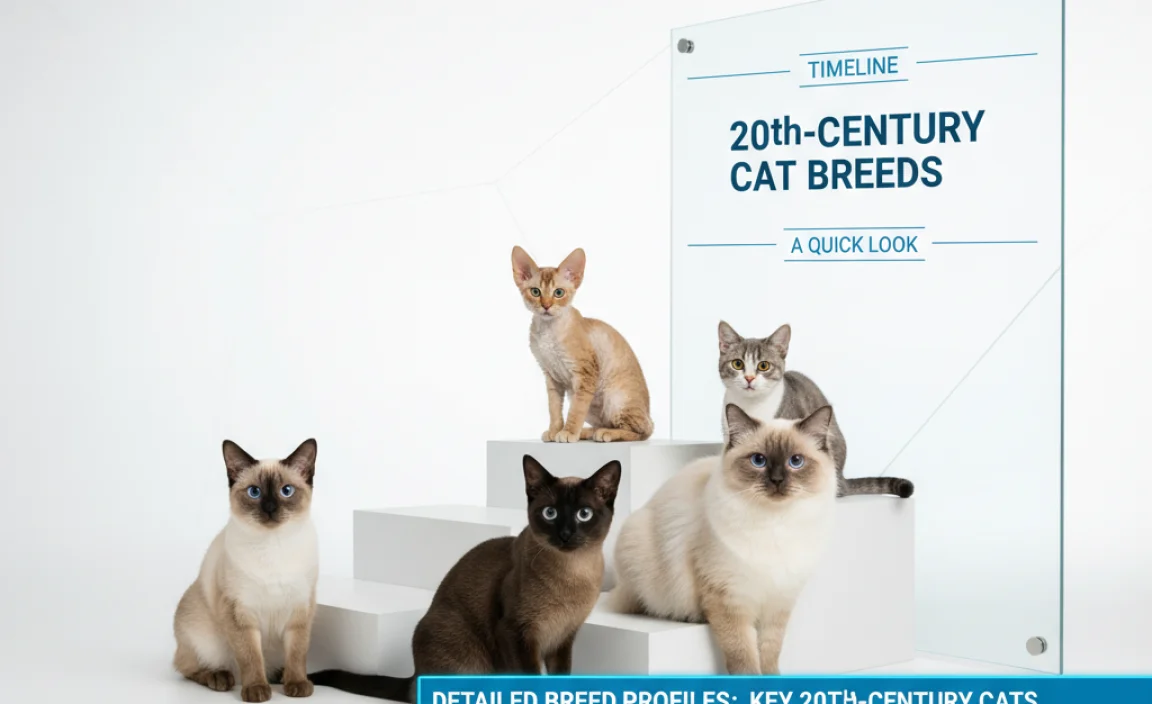
Let’s take a closer look at some of the most influential and beloved cat breeds that emerged or were refined during the 20th century. Understanding their origins and traits can help you appreciate their unique qualities.
British Shorthair
The British Shorthair is one of the oldest recognized cat breeds, with its roots tracing back to the cats brought to Britain by the Romans. These cats were valued for their hunting abilities, keeping homes and farms free of pests.
Key Developments:
- Early 20th Century: Officially recognized and standardized as a breed.
- Mid-20th Century: Faced challenges due to the World Wars, but dedicated breeders worked to preserve the breed.
- Late 20th Century: Experienced a resurgence in popularity, becoming one of the most beloved breeds worldwide.
Traits and Characteristics:
- Appearance: Known for their round faces, stocky bodies, and dense, plush coats. The most iconic color is the blue-gray, but they come in various colors and patterns.
- Temperament: British Shorthairs are calm, affectionate, and adaptable. They are excellent family pets and generally get along well with children and other animals.
- Care: Relatively low-maintenance, requiring regular grooming to keep their coat in good condition. They are prone to obesity, so diet control is essential.
As a British Shorthair enthusiast, I can attest to their gentle and loving nature. They make wonderful companions and are relatively easy to care for, which is why they have remained a popular choice for families for decades.
Siamese
The Siamese cat is one of the oldest and most distinctive cat breeds, originating from Thailand (formerly Siam). They have a rich history and were highly regarded in their native land.
Key Developments:
- Early 20th Century: Gained popularity in Europe and America, becoming a favorite among cat fanciers.
- Mid-20th Century: The breed standard was refined, leading to the more slender and angular Siamese we know today.
- Late 20th Century: Remained a popular breed, known for their striking appearance and vocal nature.
Traits and Characteristics:
- Appearance: Siamese cats have a distinctive appearance with their sleek bodies, wedge-shaped heads, blue almond-shaped eyes, and color points (darker coloration on the ears, face, paws, and tail).
- Temperament: They are highly intelligent, social, and vocal cats. Siamese cats are known for forming strong bonds with their owners and can be very demanding of attention.
- Care: They require regular interaction and mental stimulation. Grooming is relatively easy due to their short coat.
Ragdoll
The Ragdoll is a relatively new breed, developed in the 1960s by Ann Baker in California. They are known for their docile and gentle temperament, often going limp when picked up, hence the name “Ragdoll.”
Key Developments:
- 1960s: The breed was developed, with all Ragdolls tracing back to a single female cat named Josephine.
- 1970s: The breed gained popularity and recognition, with various Ragdoll associations being formed.
- Late 20th Century: Became one of the most popular breeds worldwide, known for their affectionate and laid-back nature.
Traits and Characteristics:
- Appearance: Ragdolls are large, semi-longhaired cats with striking blue eyes and a soft, plush coat. They come in various colors and patterns, including colorpoint, mitted, and bicolor.
- Temperament: They are known for their gentle, docile, and affectionate personalities. Ragdolls are great family pets and get along well with children and other animals.
- Care: They require regular grooming to prevent matting. Ragdolls are prone to obesity, so diet control is essential.
Scottish Fold
The Scottish Fold is a unique breed characterized by its folded ears, caused by a natural genetic mutation. The first Scottish Fold was discovered in Scotland in the 1960s.
Key Developments:
- 1960s: The first Scottish Fold, Susie, was discovered in Scotland.
- 1970s: The breed began to be developed and gained popularity among cat enthusiasts.
- Late 20th Century: Became a well-known breed, though responsible breeding practices are emphasized due to potential health issues associated with the folded ear gene.
Traits and Characteristics:
- Appearance: Scottish Folds are known for their folded ears, which give them a unique and endearing appearance. They have round faces and medium-sized bodies.
- Temperament: They are typically affectionate, playful, and adaptable cats. Scottish Folds are known for their sweet and gentle nature.
- Care: Regular grooming is required. It’s important to be aware of potential health issues associated with the folded ear gene, such as arthritis, and to seek regular veterinary care.
Table: 20th-Century Cat Breed Timeline
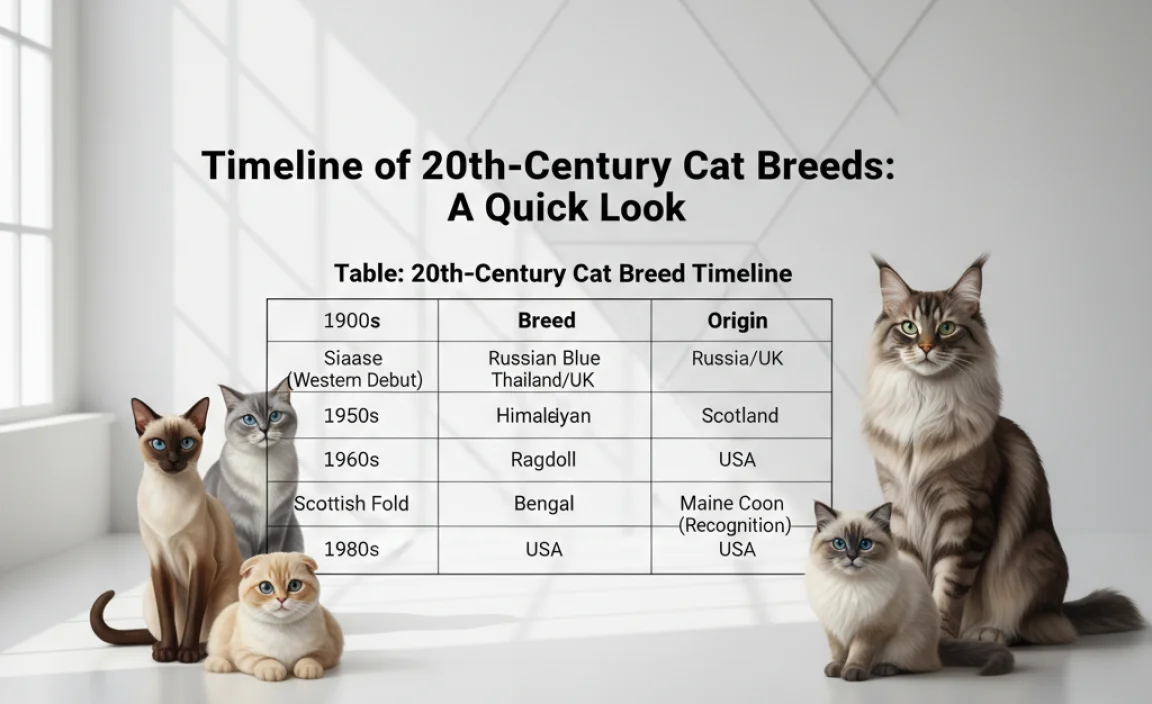
Here’s a handy table summarizing the key milestones in the development of 20th-century cat breeds:
| Decade | Breed | Key Development |
|---|---|---|
| 1900s-1920s | British Shorthair | Officially recognized and standardized |
| 1900s-1920s | Siamese | Gained popularity in Europe and America |
| 1930s-1950s | Burmese | Developed in the United States |
| 1930s-1950s | Russian Blue | Gained recognition for silver-blue coat |
| 1930s-1950s | Balinese | Long-haired version of Siamese |
| 1960s-1970s | Exotic Shorthair | Created by crossing Persians and American Shorthairs |
| 1960s-1970s | Ragdoll | Developed in California, known for docile temperament |
| 1960s-1970s | Himalayan | Cross between Persians and Siamese |
| 1970s-1990s | Scottish Fold | Characterized by folded ears, discovered in Scotland |
| 1970s-1990s | Siberian | Gained recognition as a hypoallergenic breed |
| 1970s-1990s | Tonkinese | Cross between Siamese and Burmese |
Table: Temperament and Care Needs of 20th-Century Breeds
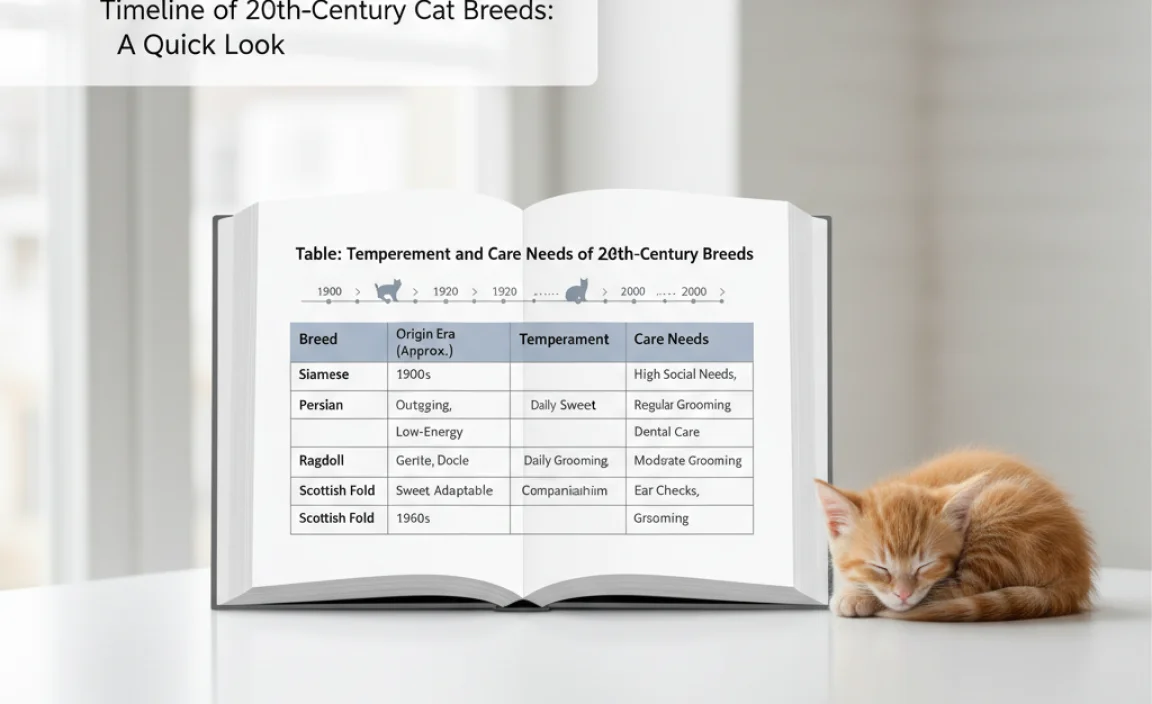
Understanding the temperament and care needs of these breeds can help you choose the right cat for your lifestyle:
| Breed | Temperament | Care Needs |
|---|---|---|
| British Shorthair | Calm, affectionate, adaptable | Regular grooming, diet control |
| Siamese | Intelligent, social, vocal | Regular interaction, mental stimulation |
| Ragdoll | Gentle, docile, affectionate | Regular grooming, diet control |
| Scottish Fold | Affectionate, playful, adaptable | Regular grooming, awareness of potential health issues |
| Siberian | Playful, robust, affectionate | Regular grooming, active lifestyle |
| Exotic Shorthair | Sweet, gentle, affectionate | Regular grooming, facial wrinkle cleaning |
Conclusion: Celebrating a Century of Feline Innovation
The 20th century was a remarkable period for cat breeds, marked by the emergence of new favorites and the refinement of existing ones. From the dignified British Shorthair to the unique Scottish Fold and the affectionate Ragdoll, these breeds have enriched our lives and homes. As we look back on this century of feline innovation, we can appreciate the dedicated breeders and enthusiasts who have shaped the cats we love today.
Understanding the history and traits of these breeds not only deepens our appreciation for them but also helps us provide the best possible care. Whether you’re a longtime cat owner or considering adopting a new feline friend, I hope this timeline has offered valuable insights into the fascinating world of 20th-century cat breeds. Here’s to many more years of companionship and joy with these wonderful creatures!

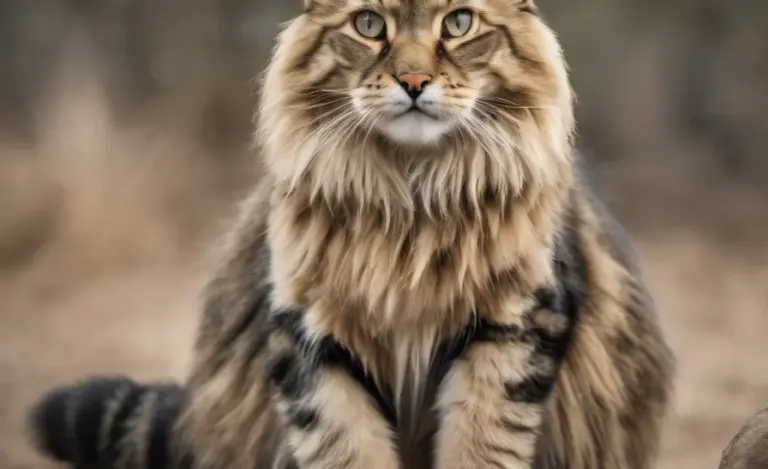
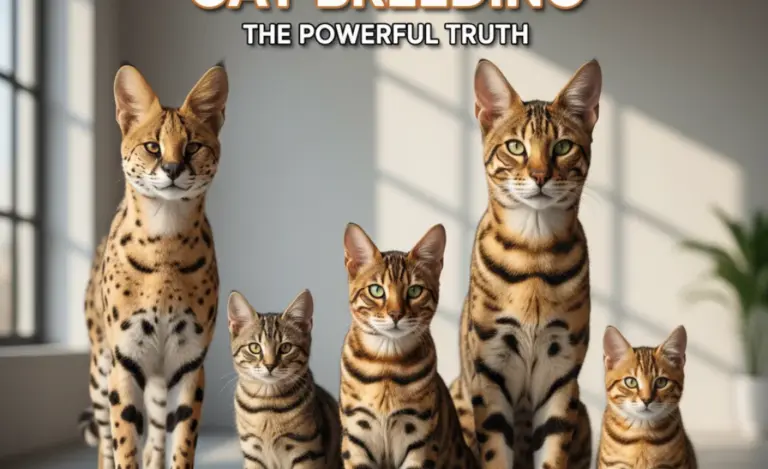
![Timeline of Norwegian Forest Cat: [Ultimate] Guide](https://britishshorthairask.com/wp-content/uploads/2025/11/timeline-of-norwegian-forest-cat-ultimate-guide-768x469.webp)
